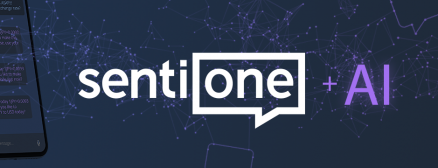How AI helps businesses use their data
Companies are flocking to artificial intelligence (AI)-powered technologies in record numbers. According to data from Gartner, 37% of organizations have implemented AI in some form, from using it for data collection to streamlining the customer journey. AI tools help stakeholders make better use of the data their businesses generate and collect on a daily basis.
The first step in modern business strategy is to collect the data. The next step is to derive insights from the data through analysis and then subsequently build strategies around those insights. Data alone doesn’t tell a story. The best brands in the world understand this, which is why they try to hire the best and brightest to turn numbers on a spreadsheet into dollar signs on a revenue statement. However, with the vast amounts of data companies generate and receive, even the best and the brightest analysts can’t keep up. Thus, brands are beginning to integrate AI capabilities into nearly every facet of their business. Here are just a few examples.
Social listening
AI is transforming the way people use social media. The fact that platforms like Twitter and Facebook enable brands to interface directly with customers has been widely established. The vast number of users on these platforms means that a brand can be referenced many times per day in any number of marginal or irrelevant ways, This can lead to information overload when trying to aggregate the data manually. For global brands or enterprises, the sheer velocity requires the use of AI tools to cut through the noise.
Social listening tools use AI to scrape the web for mentions of a brand, competitor, or specific keywords. This information is important to a business’s overall strategy. From there, brands can filter out extraneous data and customize reporting dashboards in order to measure sentiment analysis, competitor analysis, and assist in trend mapping. This enables companies to understand, target, and serve customers, leading to greater brand resonance and customer service.
Financial planning and forecasting
Growth is an overarching business objective for large and small brands. In order to grab market share and kickstart growth, companies have to invest in tools that help them organize the complexities of their finances. Modern, agile finance-management strategies use software tools like enterprise resource planning systems to collect data from a variety of sources (e.g., transactions, business intelligence, and social media) in order to efficiently report on financial performance and make projections.
Systems like these help companies streamline invoicing, control customer billing, and manage cash flow and asset lifecycles. AI comes into play through automated data collection and report generation. AI-fueled software solutions also enable more efficient collaboration, granting all stakeholders access to financial data in real-time. This improves the productivity and the efficacy of business decisions.
Product development
The key to success in any market is developing a product or service that addresses a specific consumer need. In order for brands to continue to innovate in product development, they must leverage tools that help identify trends that impact the consumer and the market at large.
Social listening can help immensely when it comes to trend mapping for product development. It enables companies to leverage direct feedback from their customers in order to identify gaps in their product offering or their competitors’. AI solutions can also provide immense help in the planning process. Project managers can mitigate human error and scope creep by deploying agile processes and using collaborative tools that help connect a cross-functional team.
Takeaways
On its own, AI can’t create insights or develop strategies. It works in tandem with human experts. From customer service to product development, the data collected by digital tools serve as inspiration for business strategists to expand their reach. Brands that fail to embrace AI in their business will ultimately be left to mire through their data.



